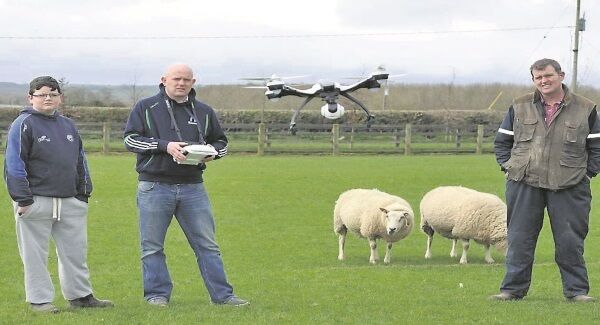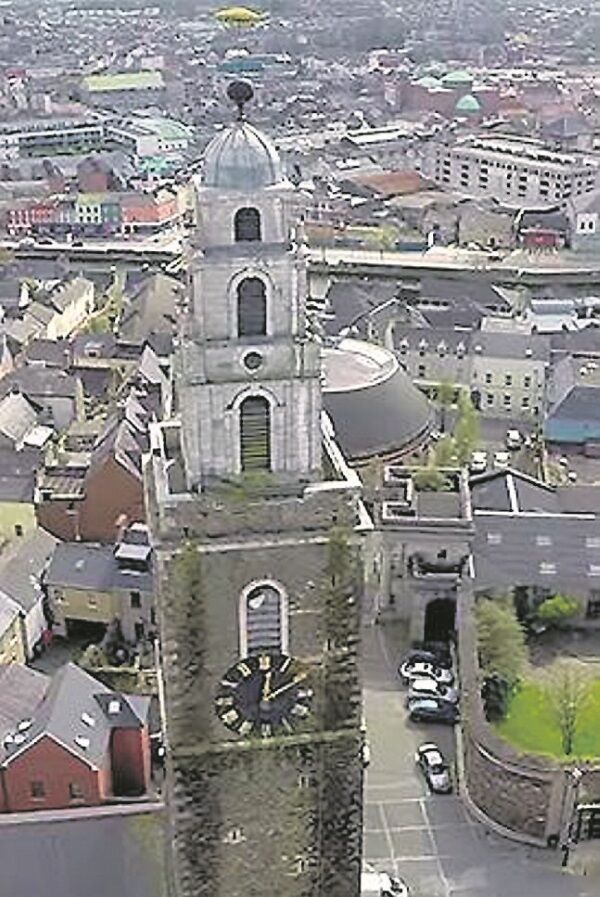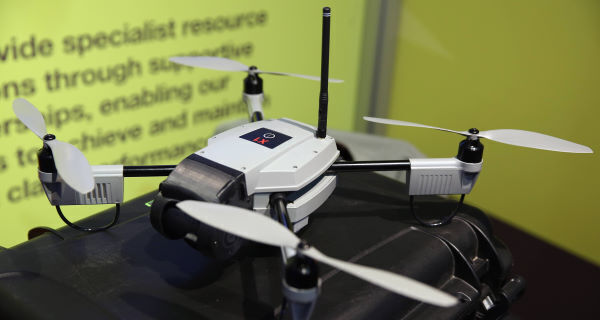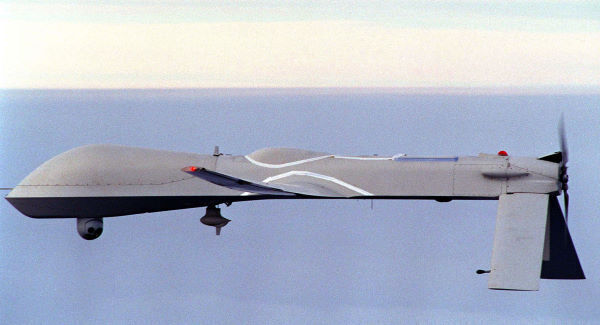DRONE TECHNOLOGY: Sky’s the limit for drone advances

When amphibious cars were marketed in the early 1960s, it was said that they would revolutionise drowning.
It remains to be seen what impact hoverbikes will have on the drone industry and motorbikes. The hoverbike is a drone or a pilotless aircraft. It flies like a helicopter, but is supposedly “more rugged”, according to the UK-based engineering company Malloy Aeronautics, and easier to fly.
The hoverbike is one of several offbeat purposes that drones are being put to. They include the brilliant and the bizarre. Last year, an ambulance drone was prototyped in the Netherlands that can deliver a defibrillator to a patient suffering from a heart attack at a speed of 96kph, a development that could potentially save lives. Drones are also, for example, being used to fish instead of fishing rods.
Swiss Post began testing a drone-borne parcel service for packages up to 1kg in weight during the summer. Its flying postmen are snow white with a yellow package in the middle to carry their freight. In 2013, Amazon announced it would unveil a system that could airlift packages to its customers within 30 minutes of placing an order.
Walmart, too, at the end of October made public its plans to do deliveries and curbside pickup by drones.
Cork businessman Dan Kiely, co-founder of Voxpro, mentions a recent visit to a BMW factory in Germany.
“I saw drone technology performing tasks far superior to the way people would do them,” says Mr Kiely”. It was an eyeopener for me.”
Some 1m drones will be sold over Christmas in the US, according to the Federal Aviation Administration. Their use is becoming widespread in Ireland, too.
Next weekend, there will be a conference on drones in Westport, Co Mayo. David Moloney, founder and chief technical officer of Movidius, and one of the conference speakers, says drones are being used around Ireland’s skies for a multitude of tasks.
“This stuff is real and right now. There are civil engineering applications,” says Mr Moloney. “One of our collaborators for the Luas Metro North project surveyed using LiDAR, which is laser-based scanning, from a drone. It scanned 9sq km of Dublin city centre looking for subsidence in the underground works down to a few centimetres resolution.
“There is another company down in Cork called Treemetrics which maps forests in situ. They use a combination of drones and LiDAR to build up a 3D image. Because they can survey in situ, you can effectively sell a forest online before touching a tree. They’ve already surveyed large amounts of forests here in Ireland. It’s run by Coillte, but is also used in forests in Canada and other countries.
“There is another company here called Evercam based in Dublin who are looking at drones to survey building sites, so you can essentially get a record of what’s happened in a building site, how works have progressed, what the deliveries are to and from the site.”
Mr Moloney is excited by the many applications of drone technology.
“With a drone, you can put a camera in a place you normally couldn’t, but there is lots of other useful stuff you do with drones,” he says. “For instance, right now there is a lot of money spent on surveying mobile phone usage, which means sticking a guy in a car who goes around and measures it. Instead, you could put a receiver on a drone and fly it around cell towers to measure the strength in places a car or a person would have difficulty getting to.
“Equally after a storm, for example, where high-voltage lines have gone down, rather than having somebody tramp across the fields, you can have a drone go and see if there is a breakdown. Or, say, on a wind farm, rather than bringing out a huge crane, which probably costs a couple of grand a day to rent, you could take the drone up to have a look and see if there are any mechanical problems with the blades before you start spending big money.
“People will recall the two Japanese tourists who fell off the cliffs in Kilkee, Co Clare in August. Imagine if, instead of having to deploy all the lifeboats and air-sea rescue staff sent out to look for missing people, you could have a fleet of drones that could search for people.
“You could limit relatives’ misery by spotting bodies in the water using drones rather than expensive helicopters or ships.”
Mr Moloney also cites the example of a farmer in Co Carlow called Declan Brennan who hit the newspaper headlines when he started using a drone to replace his retired sheepdog. His drone is nicknamed Shep. Mr Brennan and his brother use Shep to herd a flock of about 100 sheep around their fields and protect them against preying foxes.

Some of the most exciting developments in drones are being applied in agriculture. There will come a day — soon, it seems — when they will be as ubiquitous on Irish farms as tractors.
They have several logical uses. With a drone, for example, a farmer could check on animals or spot to see if a gate was left open without having to leave the farmhouse.
He or she wouldn’t have to hike across wet fields in the rain and wind for certain chores, to see which areas need to be watered, for instance. Special cameras that use high-spectral imaging can examine the heft of crops from on high, helping to figure out where crops need to be sprayed or where drainage could be improved. Being able to look at things from a height has obvious advantages.
“Imagine you are growing corn in the US midwest and a bad hailstorm rolls through the night before,” says Ernest Earon, the co- founder and CTO of Precision Hawk. “You need to talk to your insurance adjuster to figure out how much of your crop was damaged and what an appropriate insurance claim would be.
“Historically, you debate what the level of claim should be with your insurance adjuster because there is no way to walk out into a field full of corn and check. It’s eight feet tall. As soon as you walk into it, you have no idea where you are, let alone what the whole field looks like. If the whole field hasn’t been flattened, you need to find out exactly how much has.
“With a drone, you can launch it from the back of a pick-up truck. It’ll know how to fly over the field, what to collect. Thirty minutes later you’ll have determined everything you need to know about your field.”
The brave new world of drones has been coming for a long time. Pilotless aircraft have been used since the First World War, but a surge in their use has happened over the last few years. There are several factors that have caused the spike.
There have been transfers from innovations in other industries, including mobile phones, electric cars, and consumer electronics, which have caused a convergence of technological developments. GPS systems are lighter and easy to stick on drones. Batteries last longer.
Cheap cameras are being designed that are specific for drone use. Cost is key. Prices have come tumbling down.
Ben Marcus, the CEO of Airmap, mentions the example of an attitude indicator. It’s the sort of dashboard aeroplane system that would help the pilot understand which way was up and which way was down if the plane was in the clouds by providing an artificial horizon.
“Those systems in airliners cost millions of dollars,” he says. “Today, your mobile phone has similar technology that might only cost $10 [€9]. You’re using it to play racing games, to get walking directions on your navigation app. All of these other industries have pushed the cost of this technology downward.”
Mobile app companions to the flight have also been developed so that consumers can live stream what they’re filming on the camera. Most people have a smartphone that can run an app that interacts with the GPS and the camera and the drone, which creates a €1,000 system that is relatively easy to operate. They are no longer the preserve of model aeroplane enthusiasts.
“What has surprised me is that we have moved very quickly from there being a pilot for these drones to drones piloting themselves,” says Mr Moloney.
“There is a good reason for this. If you spend €1,000 on a drone that is not that easy to fly, it’s going to really ruin your Christmas if the first thing you do when you get it out of the box and you fly it straight into a wall.
“The driver is the so-called ‘out-of-the-box experience’. That’s why designers effectively put ‘training wheels’ on drones so you can still fly it yourself but you can’t do stupid stuff that is going to cause you to destroy your drone or fly it into somebody and cause harm.”
However, there are, of course, news reports and pieces of footage on YouTube of drones dropping from the sky and hitting people. It is inevitable someone will get seriously damaged or killed one day.
“It’s like the Titanic was unsinkable until it sank,” says Andrew Amato, the editor of dronelife.com.

Chelsea Sabo, a robotics research associate who is working on a project at Sheffield University to model the flight behaviour of honeybees within drones, says the same safety measures need to be put in place for drones that occurred when cars first trammelled the roads and commercial planes took flight.
“We need to regulate them appropriately and not put them in places that are obviously a risk to humans,” says Ms Sabo. “Right now, I would say the biggest concern is all the hobbyists out there who just buy ones off the shelf at a Maplin store, and don’t know where to fly them, and they’re using them in ways that are putting a lot of people [at risk].
“They’re not the best example of who should be using drones at the moment. It’s the people like the researchers and the companies who know what they are doing that should be pushing this technology.
“Unfortunately, the hobbyists are the ones that you see on the news who have crashed them and are doing stupid things. They’re giving them a bad name unfortunately.”
In the world’s most high-profile rogue flight by a drone, a hobbyist’s drone crashed on the lawn of the White House last January, which prompted terrorism fears in the media.
“As far as dangers go, there has been a lot of hoopla in the US media recently about airline pilots spotting drones,” says Mr Amato. “The government would tell you that is a big problem.”
The people within the industry will tell you that those incidents are greatly exaggerated. There is very little evidence that a majority of those reports hold any water. More often than not, it is found that the drone the pilot saw was flown by someone else within the government; it’s very rarely a hobbyist that is out of his zone and flying his drone around an airliner.
“In the event that a drone does strike a commercial aeroplane, the damage would be negligible,” says Mr Amato. “There was a hearing recently in the House of Representatives and a Stanford professor talked about the rigorous testing that manned aircrafts go through so that if it hits, say, a large bird there are safety mechanisms in place to ensure the aircraft doesn’t fall out of the sky. One of these $1,000 drones that are very popular is considerably smaller than a full- grown goose. It’s not going to do a whole lot of damage if it crashes into a plane and the chances of it getting sucked into the engine are small.”
It is the ‘sense and avoid’ technology in drones that tries to prevent them from crashing into objects by mistake,” says Mr Amato. “It draws on different principles.
“There is a company which uses sonar just like a bat uses echo location,” he says. “The drone has a sensor that sends out a ping to see how far it is from a wall, as a wall gets closer, just like how a bat can create an image in its mind’s eye of its surroundings.
“Image recognition software is another method. It seems to get better every time I turn around. An on-board camera can recognise both how far it is from an object and how big an object is in front of it. It takes constant pictures, constantly creating an on-board image in the computer of its surroundings to say ‘oh, I’m this far from the ground. I’m this far from this wall’.”
The public has also raised fears about drones being used by voyeurs.
“It’s the peeping toms’ dream come true — that you can put a camera in all sorts of places where you shouldn’t do, but people like Verifly are looking at air-traffic controls,” says Mr Moloney.
“You can imagine the world being divided up into absolute no-go areas. Let’s say over an army base or a police station and there would be other areas that you could transit over but you couldn’t take pictures. You could imagine software inbuilt that could mitigate those privacy concerns.
“Typically drones have GPS in them to know where you are. You can compare that to a database: ‘Ah, I’m over this area. Therefore I can do X, Y, Z over that facility. I can’t take high-resolution pictures,’ and so on.
“You wouldn’t want paedophiles, for example, being able to fly a drone over a school taking pictures of kids.
It’s a bit like the Wild West at the moment.”
“People are worried about privacy,” says Elizabeth Ciobanu, a writer with droneblog.com.
“Let’s say a power company is using drones to monitor their grids and they happen to be taking pictures of your property that you didn’t want them to be, but I don’t think this is unique to the use of drones.
“There are people out there who can be taking pictures without a drone.”
Rules apply when flying your drone

If your drone is for recreational purposes, you don’t require permission to fly it or formal piloting qualifications;
When flying a drone over an unpopulated area, you must keep it 120m above ground level;
You can’t fly drones at night;
You can’t fly drones in cloud or fog;
You must be able to see the drone with your own eyes (not with the aid of point-of-view camera);
The drone cannot be operated beyond 500m from the point of operation;
During take-off, the drone must not be operated within 50m of another person (excluding the person operating the drone);
You can’t operate a drone within 2km of an aircraft in flight;
Neither can you fly a drone within 8km of an aerodrome boundary;
. You can’t fly drones over urban areas, i.e. cities, towns, or villages, or over other people’s back gardens, parks, sports grounds, or beaches.
5 top drones

The French company, Parrott, is one of two market leaders – along with the Chinese outfit, DJI – in the consumer sphere of drones. The Parrott Bepop is a halfway house between a professional-level drone and a kid’s toy, and if you’re getting your first drone it’s probably the one to get because it’s entry level, price-wise. It can do various tricks, fly indoors and, of course, take pictures and video footage. It has a 1080p camera, which can be controlled and viewed by a tablet or smartphone. It will only last flying in the air for about 22 minutes. Poor battery life is a shortcoming with most drones.
The DJI Inspire 1 is the bad boy on the market. It has two controllers so you can take pictures while someone else flies it and it can hit speeds of 50 miles per hour. It also has inbuilt tracker technology to keep a reign on it in case it flies out of sight, which isn’t something you’d want to do often given its considerable price tag.
Yuneec’s Q500 Typhoon key selling points are its longer battery life, up to 50 minutes, and its three flight modes. Its Smart Mode is designed for beginners and it has a safety feature that returns a wayward drone to its home point if necessary.
The United States Air Force has been deploying the MQ-I Predator (above) for 20 years in combat zones from Afghanistan to Yemen and this year, for example, in Syria where one was shot down by the Syrian government for flying over the Port of Latakia, a military no-fly zone.
Military drones often monitor their targets for months on end, while their operators might watch their targets’ final moments from an air-conditioned room in the Nevada desert.
One of the research arms of Google X is Project Loon, which is trying to spread wifi capability to remote areas – specifically to the four million people around the world who are currently unconnected – by floating tens of thousands of hot-air balloons over the skies, twice as high as aeroplanes.










